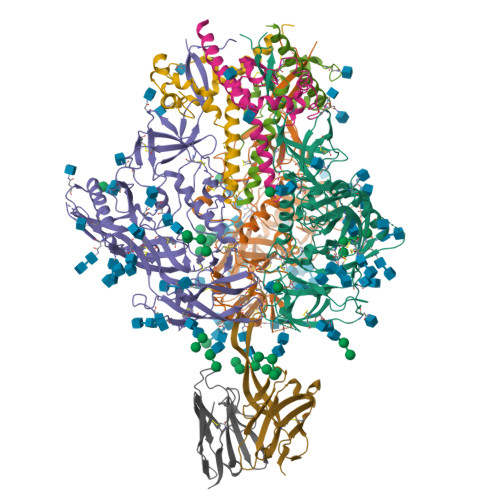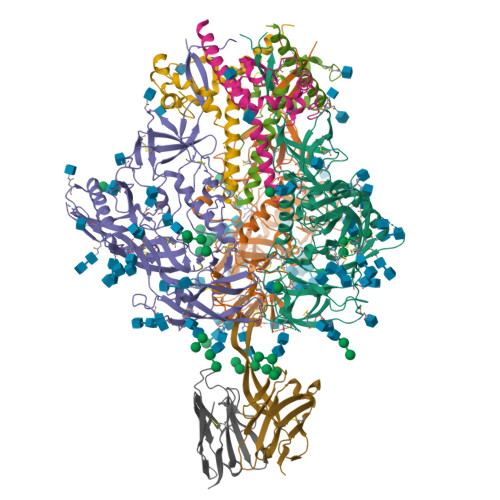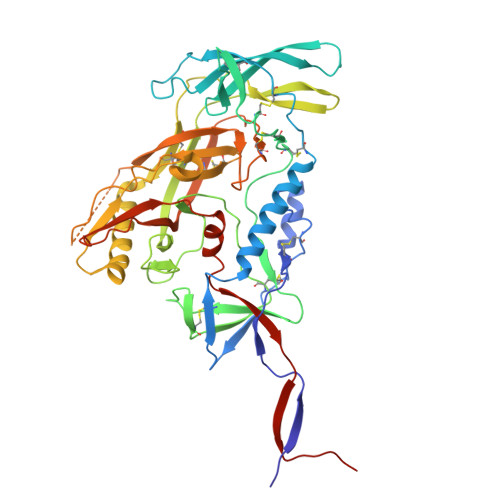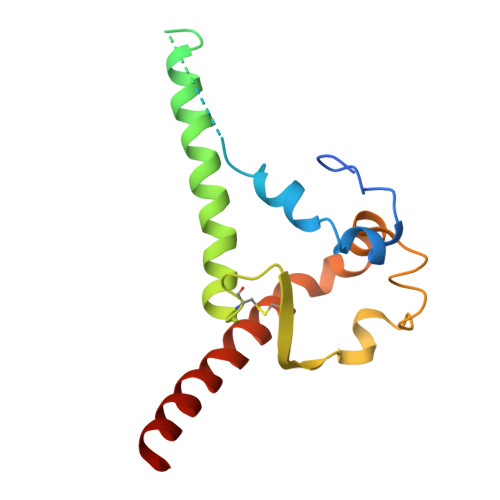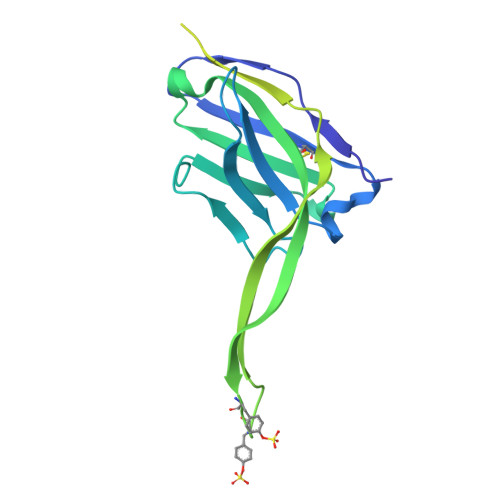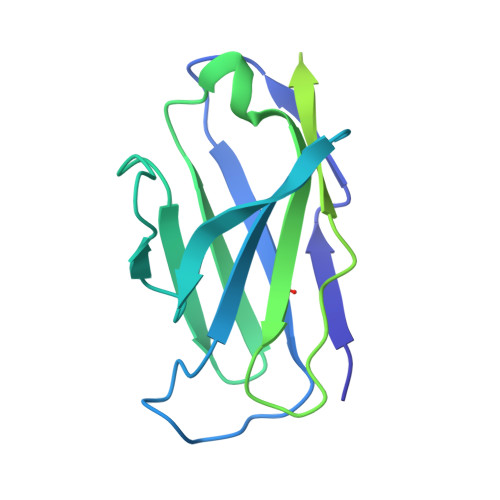Structural development of the HIV-1 apex-directed PGT145-PGDM1400 antibody lineage.
Mason, R.D., Zhang, B., Morano, N.C., Shen, C.H., McKee, K., Heimann, A., Du, R., Nazzari, A.F., Hodges, S., Kanai, T., Lin, B.C., Louder, M.K., Doria-Rose, N.A., Zhou, T., Shapiro, L., Roederer, M., Kwong, P.D., Gorman, J.(2025) Cell Rep 44: 115223-115223
- PubMed: 39826122
- DOI: https://doi.org/10.1016/j.celrep.2024.115223
- Primary Citation of Related Structures:
9D1W, 9D3D - PubMed Abstract:
Broadly neutralizing antibodies (bNAbs) targeting the apex of the HIV-1-envelope (Env) trimer comprise the most potent category of HIV-1 bNAbs and have emerged as promising therapeutics. Here, we investigate the development of the HIV-1 apex-directed PGT145-PGDM1400 antibody lineage and report cryo-EM structures at 3.4 Å resolution of PGDM1400 and of an improved PGT145 variant (PGT145-R100aS), each bound to the BG505 Env trimer. Cross-species-based engineering improves PGT145 IC 80 breadth to near that of PGDM1400. Despite similar breadth and potency, the two antibodies differ in their residue-level interactions with important apex features, including N160 glycans and apex cavity, with residue 100i of PGT145 (sulfated tyrosine) penetrating ∼7 Å farther than residue 100i of PGDM1400 (aspartic acid). While apex-directed bNAbs from other donors use maturation pathways that often converge on analogous residue-level recognition, our results demonstrate that divergent residue-level recognition can occur within the same lineage, thereby enabling improved coverage of escape variants.
Organizational Affiliation:
Vaccine Research Center, National Institute of Allergy and Infectious Diseases, National Institutes of Health, Bethesda, MD 20892, USA.








